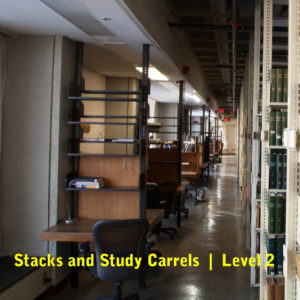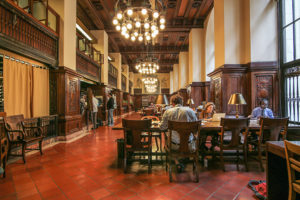Borrow Direct is my favorite feature of the Princeton library system. If you’re ever hunting for a book and it’s not available at Princeton, the Borrow Direct program allows you to order the book free of charge from another university library. A few days after your order, you receive an email that your book has arrived, and you pick it up from the front desk – where it is wrapped in paper and marked with your name. It’s like Hannukah, but all the time.
The joy of Borrow Direct isn’t limited to campus. Over the summer, when I needed to do research at Brown University’s library, the Borrow Direct system gave me unlimited access to the library there and enabled me to check out books with nothing more than my PUID. I was even allowed to reserve a carrel for the entire summer — which I did.

But as with all good things, Borrow Direct has its limits. For my “Yiddish in America” course this semester, I’m writing my final paper on the Yiddish words used to conceptualize Holocaust survivors after the war. I initially expected to use online copies of American Yiddish daily newspapers and whatever secondary sources I could find on the topic. When I met with my professor to discuss the topic, he pointed me to a recent PhD dissertation on post-Holocaust Yiddish periodicals published by survivors in Europe immediately after the war.
Needless to say, these periodicals are pretty niche. Most only existed for a few years and were not widely distributed. I checked the Princeton library catalogue and found nothing – secondary or primary. With nothing even listed in the catalogue, Borrow Direct was not an option for me. And Interlibrary Loan (ILL) – though amazing in its reach – can take a while to meet your request… so I decided to find sources on my own.
My professor suggested I check out the New York Public Library’s collection. Two searches later (I spelled the first one wrong), I found a complete archive of the periodical I was looking for, Fun Letstn Khurbn: tsaytshrift far geshikhte fun yidishn lebn beysn natsi-rezhim (From the Last Catastrophe: Journal for the History of Jewish Life under the Nazi Regime).

The archive is only available for access in person, in microfilm format. I’ve never used microforms before, but I’m very excited to take a trip to the New York Public Library on Fifth Avenue next week to look at these sources! I can’t wait to feel like a real historical researcher, squinting at old documents in a foreign language, proud to forgo contemporary conveniences like Borrow Direct.
This project has helped me understand that the University’s library is not necessarily the final destination for research. Especially when it comes to primary sources, the answers to the most interesting and urgent historical questions are sometimes only available off campus. In my case, the sources I need are conveniently available nearby. But even if they weren’t, I’m confident that a professor or a specialized Princeton librarian would find a way to access them.
— Rafi Lehmann, Social Sciences Correspondent

